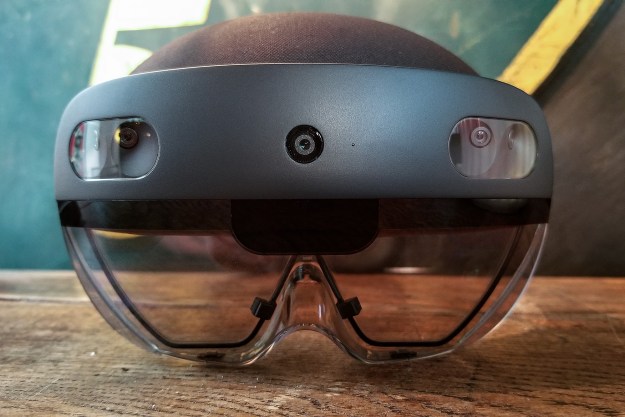The JPL engineers have developed a ProtoSpace application that uses the HoloLens to project a computer-generated version of the next-generation rover into the user’s field of view. Engineers can walk around the holographic projection and examine all of the Rover’s components virtually, allowing them to troubleshoot the design of the Rover from the start.
More than just a projection, the mixed-reality feature of the headset lets the engineers manipulate the rover’s parts and learn how they are arranged within the spacecraft. It also allows them to get a sense of the size of the Rover components by comparing the projected Rover hardware to real-life hardware. “They need to see these designs at full human scale so they can use their natural abilities for the feeling of how large a part is or how tight the clearance might be,” said Jeff Norris of JPL’s Mission Operations Innovation Office to Engadget. “It’s difficult to access that when you’re looking at a model on a computer screen.”
In addition to ProtoSpace, Microsoft and NASA also are collaborating on another virtual reality platform called OnSite that enables scientists to explore Mars from the comfort of their offices. Instead of examining the Martian landscape from a flat 2D computer screen, researchers can explore a 3D representation of the planet’s surface using imagery obtained from previous missions. This unique view lets the scientists understand both the depth and spatial orientation of objects on the planet’s surface.
NASA is no stranger to the HoloLens as the space agency has already used the device to create Destination: Mars, a mixed-reality demonstration of Mars at the Kennedy Space Center Visitor Complex in Florida. The experience allows visitors to don a pair of HoloLens glasses and take a virtual guided tour of Mars. The VR scenario walks people through the sites that were visited by the Curiosity rover, providing them with detailed information about the red planet.
Editors' Recommendations
- NASA’s Mars rover uses its self-driving smarts to navigate toughest route
- Watch how the Perseverance rover drives autonomously across Mars
- NASA has wonderful news for its plucky Mars helicopter
- NASA’s Mars drone nails its first flight of 2022
- NASA’s Perseverance Mars rover breaks 17-year-old driving record




